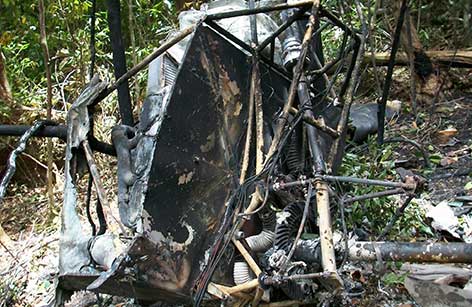The final report into a 2016 helicopter accident highlights the importance of impact-activated GPS encoded emergency locator transmitters (ELTS).

The accident occurred on 18 November 2016, when a Robinson R44 II helicopter was on a charter flight with one pilot and one passenger on board. About 41 km north-west of Mossman, Queensland, while flying above Mount Windsor National Park, the helicopter impacted dense rainforest after one of the main rotor blades struck and separated a section of the tailcone.
The helicopter broke-up into multiple fragments and descended through the forest canopy, and was subject to a post-impact fire.
The Australian Maritime Safety Authority’s Joint Rescue Coordination Centre detected a signal from the helicopter’s emergency locator transmitter (ELT), and the subsequent search and rescue operation was able to locate the wreckage and recover the seriously injured pilot. The passenger was fatally injured.
The activated transmitter led to the rescue of the pilot, who might otherwise have not survived.
The activation of the emergency location transmitter on impact resulted in the discovery of the accident site by the search and rescue helicopter about 1 hour and 48 minutes after initial detection of the ELT signal. The pilot may otherwise have not survived.
The ATSB investigation of the wreckage indicated there was low engine power and rotor speed at the time of the tail strike, which was likely the result of a main rotor blade stall event. The ATSB was unable to determine what precipitated the blade stall event.
The ATSB also found that the helicopter was likely operating in at least moderate turbulent flight conditions, which were not forecast.
It could not be determined if the wind and associated turbulence contributed to the accident, however it is important for pilots to consider the effect of the terrain on the weather forecast, which could result in a helicopter not achieving its predicted performance.
This accident highlights the importance of impact-activated ELTs, and the ATSB advocates for GPS encoded transmitters be used.
Read the report: In-flight break-up involving a Robinson R44, VH-ZNZ, 41 km north-west of Mossman, Queensland, on 18 November 2016
The ATSB research report A review of the effectiveness of emergency locator transmitters in aviation accidents provides guidance to owners and operators on how they can maximise the reliability and effectiveness of emergency locator transmitters.


